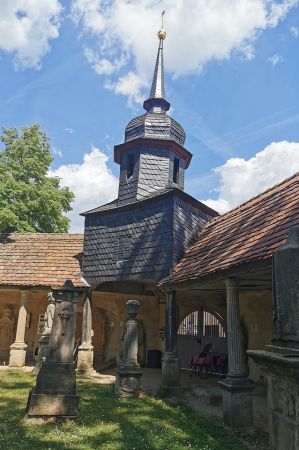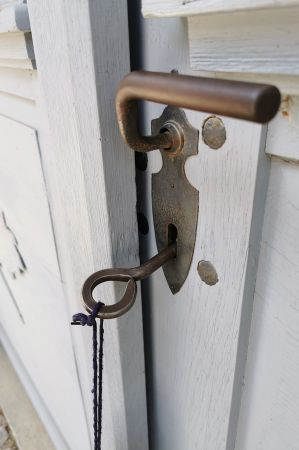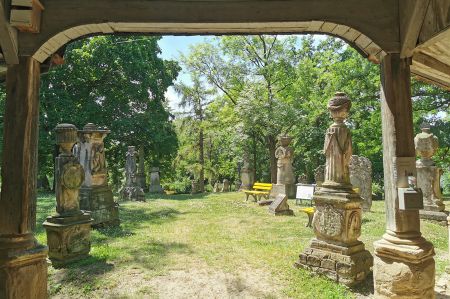The Camposanto - Old Cemetery in Buttstädt
- Written by Portal Editor
It was simply the research for another destination of a bike tour in Burgenland that brought us to the old cemetery of Buttstädt, here it was above all the proper name Camposanto that had aroused our interest.
Clearly Italian, in our opinion, but the term Camposanto only became common in the 19th century, but then referred to a special design of the cemetery based on the Italian model.
What is a Camposanto and why Buttstädt

As a result of the Reformation, cemeteries of this kind were established in the 16th century, especially in Central Germany: Leipzig (1536), Arnstadt (1537), Altenburg (1552), Buttstädt (1592), Eisfeld (1554), Eisleben (1538), Gera (1556), Halle (1594), Saalfeld (1553), Weida (1564). With the exception of Halle's Stadtgottesacker, the Eisleben Kronenfriedhof and the Buttstädter Gottesacker, nothing or only a few remnants of these have survived. The reformer Martin Luther, in his essay “Whether One Should Flee from Dying”, advises moving cemeteries away from the church. These burial sites were then called Gottesacker.

The Camposanto in Buttstädt is the oldest preserved cemetery in Thuringia. At that time, the cemetery was still well recognizable today, outside the medieval city walls. A change in the burial system as well as building measures and a lack of space finally led to the decision in 1537 not to keep a cemetery in the town of Buttstädt near the church. All burials now took place in the cemetery of the Wendish St. John's community, the Camposanto. The so-called "Gottesacker" experienced an expansion in 1591 due to urban prosperity and change.
With the e-bike to Buttstädt
From the churchyard to the graveyard
As can still be clearly seen from the course of the streets, the Old Cemetery lies outside the medieval city limits.
He is a witness to the far-reaching reformation of the funeral industry that began in the late Middle Ages.
The old custom of always choosing graves as close as possible to the altar – i.e. in the church or around it – had come into crisis. There was a shortage of space in the “cemeteries” and the hygienic conditions were questionable.
One cannot overestimate the spiritual impertinence associated with this: the dead should no longer find their last resting place in the immediate vicinity of salvation, the church, or the altar, but outside, where otherwise only the outcasts were buried. The cemetery changed from the churchyard to the "God's acre".
At the same time, and this can also be seen in Buttstädt in an exemplary manner, the strengthened bourgeoisie of the time used the new facilities for representation.
With the burial ground surrounded by arcades, which today is often called Camposanto after Italian models, a completely secular building was created. This is in no way contradicted by the fact that the imposing tombs of the Renaissance and especially the Baroque always present the city's dignitaries as pious and devoted to God.
Sandstone columns supporting the arcades were reused
In 1591 the site was expanded and construction of the arcade halls began.
A Buttstadt lily and the year 1592 still adorn the outside of the gate today.
The old complex, together with the Wendish St. John's Church, fell victim to the city fire of 1684, although some elements, such as some of the sandstone columns that support the arcades, were apparently reused.
The two colonnades that delimit the Gottesacker to the north and east contain some of the most beautiful tombs from all occupancy periods since the Renaissance.
Unfortunately, only a fraction of the tombstones have been preserved on the burial ground, which opens slightly sloping to the south-east.
The cemetery must have been completely overcrowded in the middle of the 19th century, which was the reason for closing the old, no longer expandable facility and opening a new cemetery nearby.
Please read as well:
From Friesland crossing the Harz Mountains to Halle – Saale
Koman Lake and Dam - More impressions about the ferry trip
-
-
-
-
-
-
-
-
-
-
-
-
https://www.alaturka.info/en/germany/thuringia/5686-the-camposanto-old-cemetery-in-buttstaedt/amp#sigProId3b43fcca73
